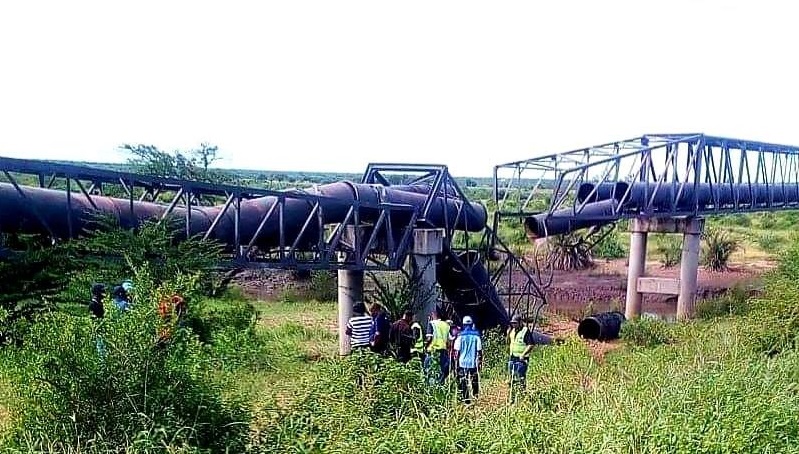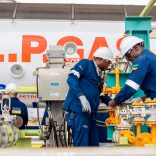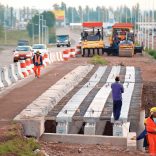CPLP: Outgoing AfDB chief pleased with successes in Portuguese African nations
Campoane bridge structure too “old” to support water mains

File photo: Magazine CRV
The Campoane bridge supporting a water mains in the district of Boane, Maputo province, collapsed because its metal structure was obsolete, the commission of inquiry created by the government has found. It recommends urgent intervention to avoid similar situations in the future.
The night of February 7, 2020, is one that residents of the Greater Maputo region wish they could forget. It was on that night that the two water mains collapsed, causing water supply restrictions for at least two weeks.
During that period there was a rush for water, but no clear and concrete explanation of what had happened. It was in this context that a commission of inquiry composed of the Ministry of Public Works, Housing and Water Resources, Eduardo Mondlane University and the Order of Engineers of Mozambique was created.
After almost a month and a half, the commission found that the accident was caused by corrosion of the metallic structure of the bridge, built in 1986, that supported the two water mains.
According to Francisco Ricardo, one of the engineers involved in the investigation, “the investigation commission found weaknesses in the bridge structure due to corrosion” affecting a significant part of the metal structure, and affecting the “alignment and support of the mains over the bridge”.
Ricardo noted that there was vandalisation of the joints of the mains along the deck, as well as “misalignment of the mains on the bridge”, probably caused by vibrations.
The commission also found that the state of the 1980s infrastructure was bad, and ideally should have been maintained at least every five years. It recommended emergency intervention to prevent problems like this from happening again.
“The structure no longer offers its initial capacity” of resistance and must be reinforced. “This rehabilitation should include a thorough analysis of the state of the infrastructure and a thorough assessment of the need to build a new one,” the commission of inquiry suggested.
An analysis of the necessary intervention is urgent, since the possibility of an identical accident is great, Ricardo said.
Presented with the results of the survey, the Ministry of Public Works, Housing and Water Resources was faced with the question of which of the researchers’ recommendations – rehabilitation or reconstruction – would be put into practice. Its conclusion was that it was premature to advance dates and budget estimates on how much would be necessary to carry out the recommendations.
By Dário Cossa












Leave a Reply
Be the First to Comment!
You must be logged in to post a comment.
You must be logged in to post a comment.